The content of the article
Exercise helps improve your appearance and well-being. During the squats, the joints of the legs are kneaded, blood circulation in the pelvic area normalizes, and endurance increases. The abdominal press is formed, the muscles of the buttocks, thighs and back are trained. When performing such exercises, it is necessary to adhere to several basic recommendations, among which - proper breathing.
Why is it important to breathe correctly when squats
Active loads are a little stress for the body, so it needs additional oxygen. Proper breathing ensures a uniform supply of essential substances to muscle tissue and internal organs. If you suddenly fill the lungs with air or empty them with jerks, the load on the heart increases. The body does not receive the required volumes of oxygen, a person suffers from hypoxia, and may lose consciousness during exercise.
Tip: During squats, you need to keep your back straight, take the correct starting position, and do not roll your body forward, otherwise your breathing will constantly go astray.
Recommendations and Tips
- You can not refuse a small workout, which will prepare the muscles and lungs for the main loads.
- Air must enter the bronchi through the nose. Oxygen activates receptors hidden in the mucous membrane, which send a signal to the brain. Gray matter reacts to messages, and stimulates the work of all internal organs.
- You can exhale through the mouth, but do not accompany the process with loud screams, as sometimes professional athletes do. Carbon dioxide in beginners should exit silently, through the nostrils or gritted teeth.
- It is useful to do breathing exercises, which increase the volume of the lungs, and train the intercostal muscles, so that during squats they expand better and easier.
- You can not hold out an exhalation or inhalation for longer than a second or two. Especially dangerous is the stagnation of oxygen when the lungs are full, when a person performs squats with heavy dumbbells or a barbell. The risk of losing consciousness when rising.
- It is not advised to constantly focus on breathing. This process should be easy and easy. It is better to pay attention to the technique of doing squats, then it will be easier for the body to normalize the frequency and depth of breaths and exits.
Important: Training should be carried out outdoors or in a well-ventilated area. In closed stuffy rooms there is not enough oxygen, and with an increase in the number of people involved, the concentration of carbon dioxide increases.
Types of breathing
In a calm state, a person uses the lungs and pectoral muscles to saturate the body with oxygen. The body with this type of breathing receives a small portion of air, which is enough for normal functioning.
Squatting, professional athletes use the abdominal cavity, namely the diaphragm. When you inhale it, it is filled with air along with the lungs, and presses on the chest from the inside, expanding it, and increasing the amount of oxygen entering the body. The second type needs to be developed, and it is difficult for a beginner to master abdominal breathing. But thanks to regular training and self-control, you can gradually improve both the chest and the diaphragm for the better.
How it works:
- Gathering air through the nose, you need to try to direct it into the lungs and stomach.
- The abdomen slightly bulges forward, expanding to its maximum size.
- Slowly push carbon dioxide out through the mouth or nostrils, while straining the abs and drawing in the abdominal muscles.
- On exhalation, the stomach should be squeezed as much as possible. Thanks to this type of breathing, the body receives a lot of oxygen, and the press also trains.
Important: One of the main problems of athletes is protrusion of the abdomen during exercise, including squats. It is necessary at the moments of maximum load, that is, lifting, try to draw in the abdominal muscles. If you do not do this, over time the press will come forward, and the person will seem fatter than he really is.
Classical exercises: slowly and measuredly
Start advising with squats with your own weight, without using barbells or dumbbells. After 6-10 repetitions, when all the muscles are warmed up, including intercostal, weights can be added.
- A person who has taken a starting position should free the lungs of carbon dioxide residues.
- Gently lowering yourself, tightly tighten your lips, and slowly inhale the air with your nose. No need to rush, and try to capture more oxygen than the lungs can accommodate.
- When the pelvis is opposite the knees, stop inhaling, and begin to exhale. You can push carbon dioxide out of your lungs only by half rising.
- It is better to stretch your arms in front of you, or raise them to your shoulders. An alternative is to spread it apart. The limbs should not hang down on the sides, this position prevents the chest from expanding.
Tip: J. Wider, the author of a book on the basics of bodybuilding, suggests breathing as comfortable as possible. The athlete believes that focusing solely on the rhythm of inspirations - exhalations, a person ceases to completely control his body, and performs exercises incorrectly.
Advanced version
Squatting with a load helps to pump up the buttocks and hips, develop the lumbar and abdominal muscles. The first rule that beginners and experienced athletes must follow is that posture should always remain perfectly straight.
- A deep breath, and a sharp exhale.
- Go to the machine, and put the bar on your shoulders.
- Spread your legs and straighten your back, fill the lungs with 3/4 air.
- Slowly drop to the desired level, you can hold your breath for a second.
- Lifting, especially with a load, requires some effort. It is advised not to rush with an exhalation, returning to the starting position.
- Air from the lungs should exit smoothly, without sharp jerks, through the nostrils or teeth attached.
- Having straightened up, you need to exhale the remaining carbon dioxide, and again fill the chest with oxygen.
Option Two: for experienced athletes
Most people think that holding their breath is bad, but there is a special category that says: air in the lungs during recovery is natural. In this case, the bar squat pattern will be slightly different:
- Putting the barbell on your shoulders, fill the chest with air for three quarters.
- Oxygen can be taken by mouth, making a sharp shallow swallow.
- Hold your breath while doing the barbell exercise.
- Quickly crouching and returning to the starting position, “spit out” carbon dioxide with effort, and again fill the lungs with oxygen.
Important: Some bodybuilders take a shallow breath before the next approach, and exhale only after they complete the squat. They manage to sit down from 4 to 10 times with full breasts. But such an approach is dangerous for the heart, and can only be used by an experienced athlete with a trained body and a developed respiratory system.
Proper rest
Between approaches, a break of 1–2 minutes to 4–6 is required. During the rest period, breathe exclusively through the nose, trying to take a deep breath, filling the lungs with air to the brim. The exhalation should be slow, and continue until the chest is empty.
They recommend breathing in a uniform rhythm, and returning to squats when the pulse is normal, and the body is saturated with oxygen.
Getting to the next exercise, it is advised to take a deep breath so that the lungs fully open. Exhale complete each repetition and approach.
If after squats it is hard to breathe, it means that it is necessary to reduce the load. In this way, the body signals that it is not ready for a lot of weight or so many repetitions. You need to start with small achievements, constantly raising the bar.
Women’s lungs can hold 4 to 6 liters of air, depending on their physique. The volume of male respiratory organs varies from 5 to 7, with a maximum of 8 liters. But with an inspiration, only about 2 liters of oxygen enter the body, and a similar amount of carbon dioxide comes out.
Tip: It’s a bad idea to try to breathe before training. You can’t “push” more air into the lungs than they can accommodate. Otherwise, everything will end with hyperventilation of the respiratory organs, insufficient oxygen supply, and dizziness, and in rare cases - loss of consciousness.
Additional recommendations
- Quick squats - frequent and shallow breaths. Slow and smooth training - measured and leisurely breathing.
- During inhalation, the muscles relax as much as possible in order to expand, while exhaling they tighten and contract. If the main goal of squats with dumbbells or a barbell is to pump up your legs, then it is necessary to empty the lungs when lifting. Need to improve posture or to form not only beautiful buttocks, but also a toned abs? It is recommended to inhale air, returning to the starting position.
- For people who do not suffer from pressure problems, you can try the following type of breathing: inhale sharply in the starting position, and in the middle of the amplitude, not reaching the “dead point”, hold the air. Having fallen, one cannot exhale so that the balance is not disturbed. Rise again to the middle, and only then drastically empty the lungs. Returning to the starting position, again for a few seconds to stop breathing.
- Beginners need to start with light squats. They should constantly monitor their breathing, but not focus on it. Properly selected pace of inspiration - exhalation increases endurance, and helps to quickly achieve the desired effect. It is better to initially learn the breathing technique during physical activity than to relearn after a few weeks, or even months.

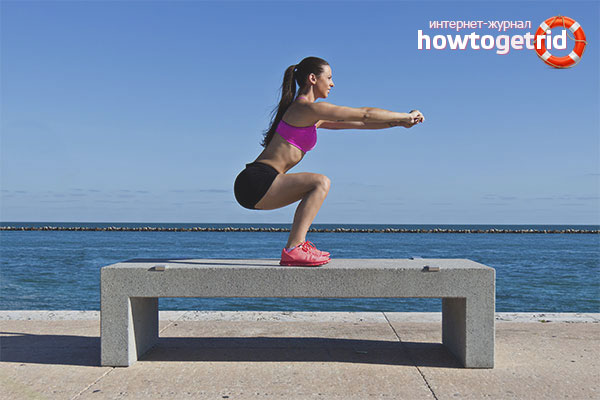
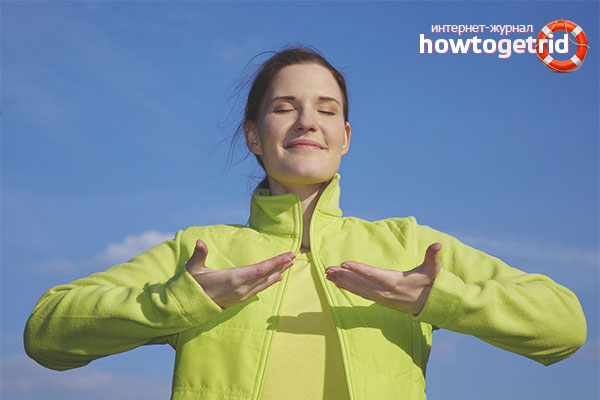
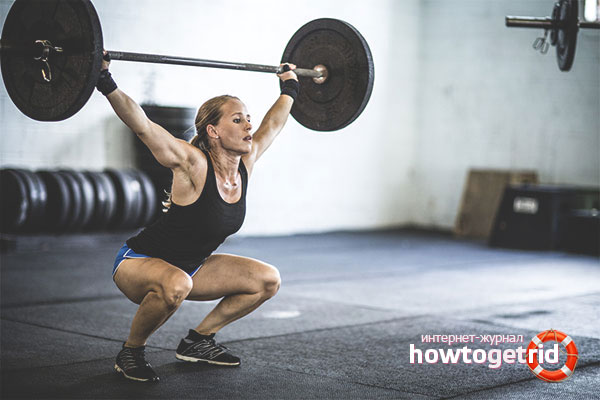

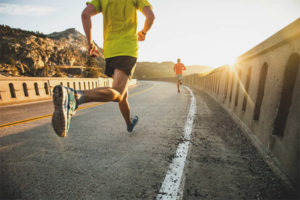

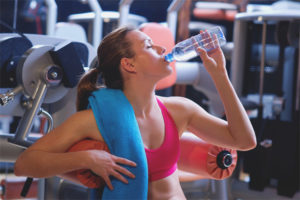




Submit